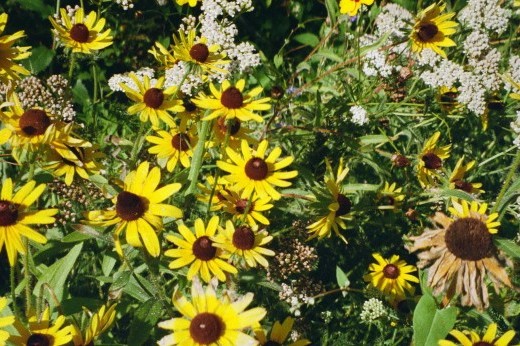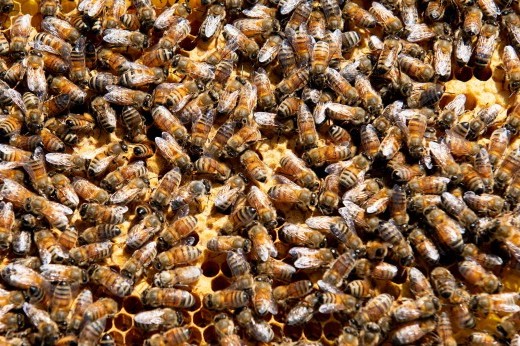We need to talk about Kevin.
Kevin, short for F#$%ing Kevin, is the name I apply to any one of the many Eastern gray squirrels (Sciurus carolinensis) living in my yard. Many gardeners complain of deer, birds, rats. I complain of squirrels.

We’ve gotten into a vicious cycle. In the fall, the army of Kevins adds a minefield of acorns to my carefully fertilized, mulched, and leaf-covered beds. In the spring, the squirrels and I vie for control. I rip up brand new oak seedlings. They dig in my freshly planted beds for their stored loot, scattering my own seeds in the process. The summer comes, and they attack my growing tomatoes, taking single bites out of each one. They leave them out in the open for me to find, apparently merely to watch me scream. Autumn arrives, and the cycle of squirrel annoyance begins anew.
My Kevins, as I wrote about in my 2022 book Pests: How Humans Create Animal Villains, are pests. But what, exactly, does “pest” mean?
“Pest” is a word that we apply to many of the creatures that irritate us. They attack our stuff—the crops and gardens we love so dearly. Slugs. Caterpillars. Sap-sucking insects. Seed-seeking birds. Rats. Deer. Squirrels. They’re the multilegged, mobile counterpart of the weeds that also plague us—and they are a lot harder to fight, as they can’t just be ripped up and hurled in the compost.
But as I reported my book, I began to understand that the animals we call “pests” and the plants we call “weeds” all have something important in common: Us.
“Pest” and “weed” are relational terms. Calling an animal a pest, calling a plant a weed, suggests that the creature or plant has little value in our eyes. I hate my Kevins because they are animals in a place I think of as mine. They are doing something I don’t want. They are taking something that I value.
For a word that is supposed to describe an animal, “pest” has a lot of “I” in it.
There are lots of reasons why we give pests their label. They cause frustration and harm—and for those who farm for a living, they can cause real, painful economic loss. But in the home garden, I find these labels often intersect with ideas of control.
In my garden, I’m harnessing the power of soil and sun and seeds to give me food and flowers and green things to fill my eyes and heart and stomach. I plan with careful math, economics, tomato stakes, and a large amount of twine. I work hard, scooping better soil into my heavy clay, wrestling with drip irrigation, and religiously turning my compost. When I’m done, I see neatly arrayed plants, watered on my schedule and carefully plotted to ensure each has their right amount of time in the sun.
What a pest or weed really is, often, is an animal or plant that is thriving too close to us.
Pests and weeds are the chaos that make a mockery of my work. Ivy—the English and poison varieties—creeps in determinedly from my neighbor’s yard. Bamboo springs forth on the other side. Birds scratch at my seeds, and the squirrels, well...
For many, the initial impulse is to poison and punish. To blast the ivy with weed killer and set traps and poison for rats. To scream at the squirrels. But while that might feel satisfying, it can be ineffective. Ripped up plants come right back. Poisoning rats in urban gardens can even have the opposite effect, as those poisoned rats end up in the bellies of local birds of prey, killing the very animals we welcomed as a solution to our pest problem.
What if we turned the idea of the pest around? Instead of asking what will get rid of the thing we hate, why don’t we first ask why it’s there?
What a pest or weed really is, often, is an animal or plant that is thriving too close to us. In a world where our actions routinely drive plants and animals to extinction, they are a success. Their resilience is frustrating, yes. But it’s also intriguing.
The best approach usually starts with a little curiosity. Ivy creeps in because my hill is shaded and bare. In city environments, rats are the natural result of garbage left outside and crumbling infrastructure. Squirrels have strong memories, and will come back to their first tomato spot to find others. Deer munch on tender foods like hostas, and prefer edge habitat.
Learning about our pests allows us to think about prevention, a key principle of Integrated Pest Management. Rats, for example, thrive where there’s lots of food. Changing how your neighborhood stores their trash (as New York City is beginning to do) can send rats seeking elsewhere. This technique requires working together—as a community garden, a set of neighbors, a city.
In my garden, I’m trying to know my own enemies. It starts with defense instead of offense. I’m steadily planting, foot by foot, rows of native phlox and ragwort—groundcovers aggressive enough to stand against ivy, if I help them along. My tomatoes now have a cage, though one that had to be reinforced with twine, chicken wire, and a lining of bricks after three Kevins got themselves stuck inside it. I recently discovered that squirrels often go after tomatoes when what they are seeking is water. This year, I’m adding a tiny water fountain.
I’m trying to garden with a little less control, and a little more understanding. As I do, I’ve dredged up more than a little respect. Ivy makes me curse, but its tenacity also inspires me. The army of smart, athletic Kevins in my yard highlights a thriving suburban ecosystem. The more I learn about them, the more impressed I become. Maybe my local squirrels have earned their tomato tax.



